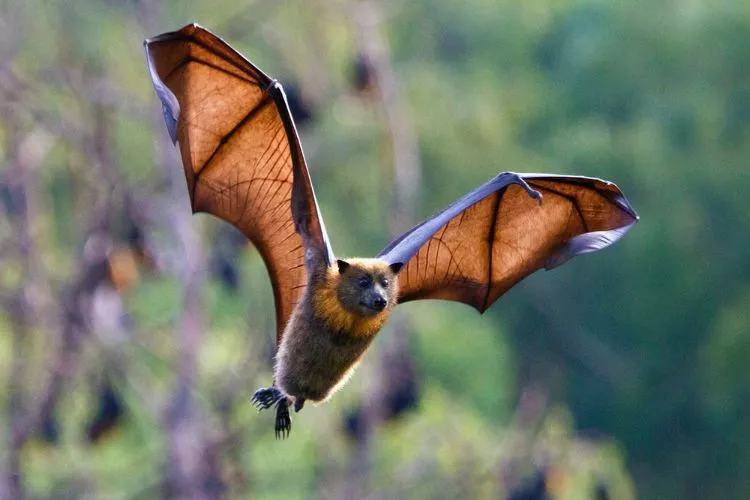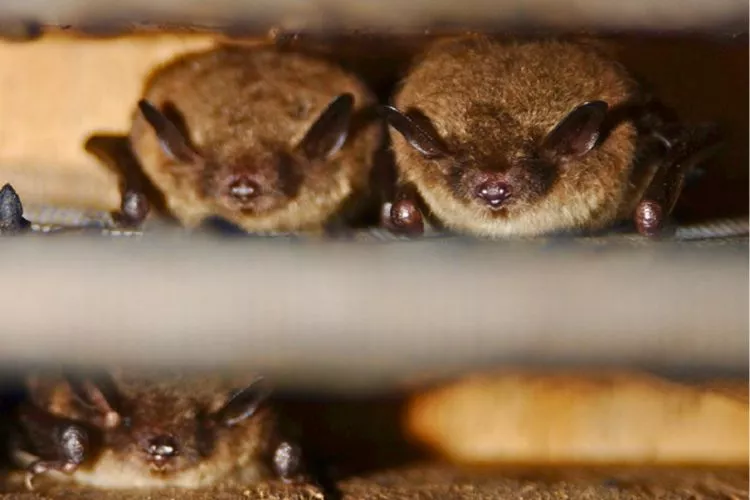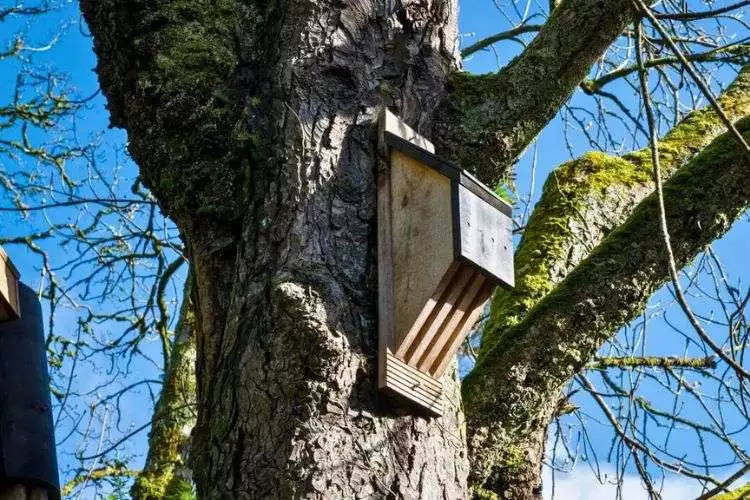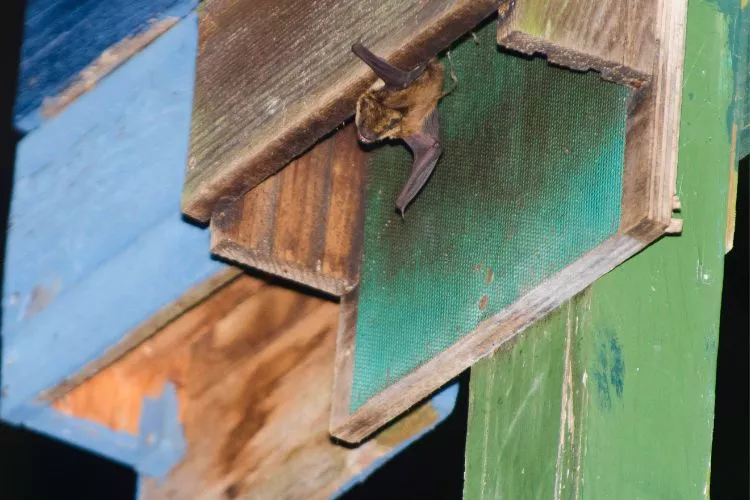As dusk descends and day turns to night, the fluttering silhouettes of bats can often be seen embarking on their nightly missions. These creatures of the night perform an intriguing dance in twilight, but are bats good to have around? Before you let your imagination run to scenes from vampire movies, let’s take a moment to consider the various roles these flying mammals play in our ecosystem.
This article highlights the often misunderstood and underappreciated world of bats, highlighting their benefits and tackling common misconceptions. Bats are more than just a spooky symbol of Halloween, they hold the key to a balanced and thriving environment. Do stick around as we explore the evidence, unravel the myths and provide an informative look into the secret lives of bats.

Are bats good to have around?
Yes, bats are indeed beneficial to have around. Scientific studies reveal that bats play a significant role in maintaining ecological balance. They act as natural pest controllers, consuming many insects and reducing the need for chemical pesticides. Certain bats also contribute to plant pollination and seed dispersal, fostering biodiversity.
Additionally, their guano (excrement) can serve as an effective fertilizer. Despite their unfavorable reputation, bats are crucial in various ecosystem functions. However, while they are largely harmless, avoiding direct contact is best to prevent any disease transmission. It’s necessary to appreciate their usefulness, yet respect their nature.
Is it bad to have bats around your house?
While there may be some concerns, having bats around your house is generally not bad, and they can even offer some benefits. Bats are:
- Natural insect controllers.
- Consuming thousands of mosquitoes and other pests every night.
- Providing natural pest control for your surroundings.

However, it’s essential to differentiate between outdoor bat activity and bats making their home within your house, such as in an attic or wall spaces, which could raise health and safety issues. Bat droppings can accumulate over time, leading to unpleasant odors and potential growth of harmful fungus. Furthermore, direct contact with bats risks disease transmission (such as rabies) to humans or pets.
To address these concerns, it is recommended to use non-invasive, humane methods to exclude bats from inhabiting your home. Overall, having bats around your house can be beneficial, just ensure they roost in a natural environment away from your living spaces.
Do bat houses attract snakes?
Generally, bat houses alone do not directly attract snakes. However, the presence of bats may attract predators, including some species of snakes. Snakes can be drawn to bat houses if the conditions are suitable for them, like the availability of a food source (bats or bat pups) and the structural accessibility of the bat house.
Some snake species are known to climb trees and structures to reach bat colonies, while others might show no interest. Remember that this also depends on the location and local snake species.
To lower the risk of snakes and other predators accessing your bat house, position it high enough off the ground (at least 12-20 feet), away from trees and structures that snakes could climb, and ensure there is a smooth pole or wall beneath the bat house that would make it harder for animals to climb.
How many bat houses per acre?
The number of bat houses per acre isn’t definitive as it’s contingent on multiple factors including the bat population in your area, the availability of natural roosting sites, and the types of bats you’re trying to attract.
However, as a general guidance, Bat Conservation International (BCI) experts recommend starting with one to two houses. Multiple houses provide bats with more roosting options, increasing the chances of a bat occupancy.

It’s also crucial to note that the characteristics of the bat house like the construction, placement, sun exposure, and predator guarding play vital roles in its attractiveness to bats, not just the sheer number of houses.
Most importantly, patience is key; bats can take up to two or three years to occupy a new bat house. Remember that every habitat is unique, so observation and experimentation may be required to optimize your local bat population support.
Is It dangerous to have a bat house?
Having a bat house is not inherently dangerous. Bat houses can be beneficial by attracting bats to your area and providing them a designated space to roost, away from your living areas. This can, in turn, offer natural insect control, since many bats feed on pests like mosquitoes.

However, it’s important to handle and maintain the bat house responsibly. Be cautious not to disturb the bats, particularly during their breeding season. Direct human contact with bats should be avoided to prevent potential disease transmission, like rabies, which is rare but can occur.
Ensure the bat house is securely mounted to prevent falling or causing injury. The bat house should also be placed where droppings won’t cause an issue, as bat guano can accumulate over time and generate unpleasant odors. With these precautions, having a bat house poses minimal risk and could contribute positively to your local ecosystem.
What to do if bats are near your house?
If bats are near your house, it’s essential to approach the situation calmly and responsibly. Bats can provide natural pest control by feeding insects, which can be advantageous. Follow these steps if you observe bats near your home:
- Observe: Determine whether they fly nearby or roost on your property (e.g., in your attic or wall spaces). If they are only flying around, consider allowing them to stay as they are likely controlling pests in your yard.
- Exclude: If bats roost in your house, plan for non-harmful exclusion methods to gently encourage them to find an alternate space. Seek advice from local wildlife or pest control experts familiar with your area’s legal, ethical, and best practices.
- Bat House: Consider installing a bat house nearby to provide them with an alternative roost. Be sure to familiarize yourself with proper placement, height, and exposure to improve the chances of occupancy.
- Safety: Avoid direct contact with bats to minimize the risk of disease transmission. Remember, bats are protected species in many regions, so always opt for humane methods of exclusion or assistance.
Other articles you may find useful: Does verbena attract butterflies? | Why Do Bats Fly In Circles? | Can Hummingbirds Be Pets?
Conclusion:
In conclusion, bats, although often misunderstood and sometimes feared, play crucial roles in myriad ecosystems worldwide. Bats contribute to critical ecological functions as natural pest controllers, pollinators, and seed dispersers. While their occasional residence in human structures might pose potential health and safety risks, these situations can be effectively and humanely addressed without causing harm to these beneficial mammals.
With the correct guidance and patience, implementing structures like bat houses can encourage bats to occupy spaces outside our homes, allowing for coexistence that benefits both human and bat populations. The presence of bats is not only beneficial for maintaining ecological balance but also helpful in reducing dependency on chemical pesticides.
Learning about bats and dispelling common fears and misunderstandings can foster greater respect for these unique creatures. After all, the question should not be whether bats are good to have around, but how we can better coexist with these intriguing guardians of the night. I hope, I have been able to clear your confusion regarding: are bats good to have around?


